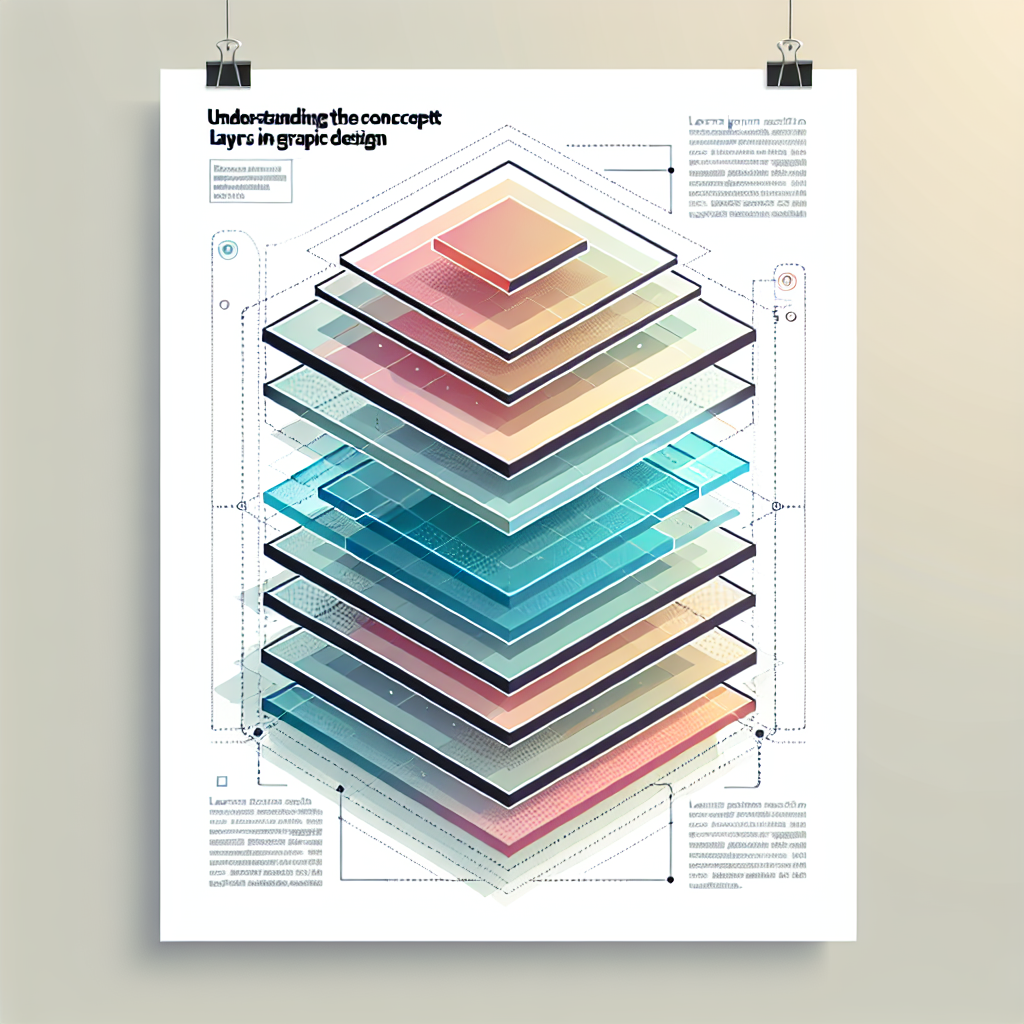Layers are a pivotal concept in graphic design that allow designers to manage and organize the individual components that make up a graphic design. The concept of layers allows designers to manipulate different components of a design independently, without affecting the other elements. This can result in a significantly streamlined design process and more intricate and detailed designs.
The Concept of Layers
When designing, imagine creating a stack of transparent sheets. Each sheet represents a layer on which you can create drawings or text. You can change the order of these sheets, so that some aspects of the design appear above or below others. This notion forms the basic premise of the concept of layers. They can be considered as separate planes on which different design elements can exist in the same space, all independent of each other.
Beneficial Characteristics of Layers
Layers were introduced to make the design process less destructive and more flexible. They protect designs from unintentional permanent changes. As all the lifework and modifications are being done on a separate layer, the original image remains unaffected. Consequently, layers offer a safety net when experimenting with different design elements. They also enable designers to organize their work more effectively as they can toggle the visibility of different layers, letting parts of the design be viewed or hidden as needed.
Layers in Different Software
All premier graphic design softwares like Adobe Photoshop, Illustrator, GIMP, and CorelDraw support the concept of layers. The implementation and execution may differ, but the fundamental functions remain relatively consistent. Their versatility allows graphic designers to manage complex projects that include multiple elements without the clutter and confusion that often accompanies such tasks.
The Use Cases for Layers
Layers significantly help in non-destructive editing, allowing elements to be manipulated individually. They can also be hidden or shown at will, aiding the overall process of the design. Moreover, layers can be used to apply effects or styles to specific parts of an image. They can also assist in color correction processes, retouching, compositing, and creating complex graphics with multiple elements. Layers provide better organisation, especially in large projects with numerous elements.
Conclusion
In conclusion, understanding layers is essential for polished and professional output in graphic design. It affords designers the ability to carry out complex operations effortlessly, allows for more flexibility, and promotes a more organized workflow. Whether you’re using a software like Adobe Photoshop or open-source software like GIMP, mastery over layering will take your design skills to the next level.
FAQs
- What are layers in graphic design?
Layers in graphic design refer to the different levels at which you can place an object or image file. You can consider them as sheets of acetate stacked on top of each other.
- Why are layers important in graphic design?
Layers are important in graphic design because they allow for non-destructive editing. Designers can work on each layer independently without altering other elements in the design.
- How can I work with layers in Adobe Photoshop?
Working with layers in Adobe Photoshop involves layer creation, rearranging layers, applying blend modes, adjustment layers, layer masks, and more.
- Can I use layers in all design software?
Most advanced graphics software allows the use of layers. Adobe Photoshop, Illustrator, GIMP, and CorelDraw are some software which support layers.
- Do I always need to work with layers in my designs?
This largely depends on the complexity of the project. However, using layers usually makes the design process more organized and efficient, particularly for intricate designs.

